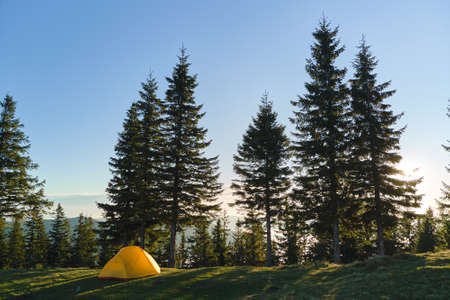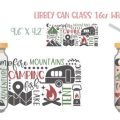Introduction to Budget-Friendly Camping Meals
Heading out on a camping trip is one of the best ways to explore the great outdoors in the U.S., but planning meals that are both affordable and satisfying can be a real challenge. Whether you’re hitting a national park, pitching a tent at a state campground, or enjoying a weekend at a local site, smart meal planning will help you save money without sacrificing taste or nutrition. In this article, we’ll dive into why it’s so important to prepare budget-friendly meals before your next adventure. You’ll learn how thoughtful planning can keep your costs low, ensure you eat well-balanced meals, and make cooking at the campsite easy and convenient. By setting realistic expectations for your food budget, nutritional needs, and convenience, you’ll be able to focus on making memories instead of worrying about what’s for dinner.
2. Essential Tips for Meal Planning on a Budget
When planning meals for your next camping adventure, keeping costs low doesn’t mean sacrificing flavor or nutrition. With a little strategy, you can create delicious and satisfying meals without breaking the bank. Here are some key tips to help you save money while still enjoying great food outdoors:
Make a Shopping List and Stick to It
Impulse purchases can quickly add up, especially when shopping for a camping trip. Before you head to the store, plan out each meal and snack, then write down only what you need. This not only helps you avoid overspending but also ensures nothing essential gets left behind.
Buy in Bulk Where Possible
Purchasing staples like rice, pasta, oats, and canned goods in bulk is almost always more cost-effective. Many warehouse clubs or grocery stores offer discounts on larger quantities, and these items are perfect for camping since they store well and can be used in multiple dishes.
Choose Multipurpose Ingredients
Selecting ingredients that work across several recipes is a smart way to stretch your dollar. For example, tortillas can serve as breakfast wraps, sandwich holders for lunch, and bases for dinner quesadillas. Below is a quick guide to some versatile ingredients and their uses:
| Ingredient | Breakfast | Lunch | Dinner |
|---|---|---|---|
| Tortillas | Egg wraps | Turkey & cheese roll-ups | Quesadillas |
| Canned beans | Breakfast burritos | Bean salads | Chili or stew |
| Rice | Porridge (with milk & fruit) | Rice bowls with veggies | Stir-fries or side dish |
| Cheese | Melted on toast or eggs | Sliced in sandwiches | Topping for casseroles or pasta |
| Eggs | Scrambled eggs or omelets | Easter egg salad sandwiches | Baked into casseroles or fried rice |
Additional Money-Saving Tips:
- Avoid individually packaged snacks: Buy large bags and portion them out yourself.
- Opt for seasonal produce: Fruits and veggies in season are often less expensive and taste better.
- Prep at home: Washing, chopping, and pre-cooking ingredients before your trip saves time at camp and reduces food waste.
- Reuse leftovers: Plan meals that can use leftovers from previous ones to avoid throwing away good food.
The Bottom Line:
A little preparation goes a long way toward budget-friendly meal planning. By making a list, buying in bulk, and using versatile ingredients, you’ll keep costs down while enjoying hearty meals under the stars.

3. Best Budget-Friendly Foods for Camping
When it comes to camping, choosing the right foods can make all the difference between a stressful experience and an enjoyable adventure. The best budget-friendly camping foods are those that are not only affordable but also lightweight, non-perishable, and easy to prepare with minimal equipment. Here’s a rundown of classic American camping staples that check all these boxes.
Canned Beans
Canned beans are a go-to for many campers across the U.S. They’re packed with protein and fiber, require no refrigeration, and can be eaten hot or cold. Whether you add them to chili, wraps, or simply heat them over your campfire, canned beans offer a hearty meal without breaking the bank.
Pasta
Pasta is another budget hero for outdoor meals. It’s lightweight, packs easily, and cooks quickly over a portable stove or campfire. Pair pasta with jarred sauce or olive oil and spices for a satisfying dinner after a long day on the trail. You can also toss in some canned veggies or tuna for extra nutrition.
Oats
Oatmeal is an all-American camping breakfast favorite. Oats are inexpensive, take up little space in your pack, and cook in minutes. Add dried fruit, nuts, or a spoonful of peanut butter for energy that’ll last through morning hikes.
Tortillas
Tortillas are more packable than bread and stay fresh longer. Use them as the base for breakfast burritos, wraps stuffed with beans and veggies, or even as makeshift pizza crusts cooked over your campfire grill.
Other Essentials
Don’t forget about other wallet-friendly options like instant rice, ramen noodles, hard cheeses, summer sausage, granola bars, and trail mix. These foods require little preparation and are perfect for snacking or quick meals on the go.
Plan Smart, Eat Well
By sticking with these budget-friendly camping favorites, you’ll keep both your wallet and your stomach full—making it easier to enjoy everything America’s great outdoors has to offer.
4. Sample Meal Plan for a Weekend Camping Trip
Planning your camping meals doesn’t have to break the bank! Here’s a practical, budget-friendly meal plan tailored for a two-night, three-day camping adventure. This plan covers breakfast, lunch, dinner, and snacks—using easy-to-find ingredients from any American grocery store. Estimated costs are included to help you stick to your budget while keeping everyone well-fed and satisfied.
Day 1
| Meal | Menu | Estimated Cost |
|---|---|---|
| Breakfast | Eat at home before leaving | $0 (included in home groceries) |
| Lunch | Turkey & cheese sandwiches with carrot sticks and apples | $10 (serves 4) |
| Dinner | Campfire chili (canned beans, ground beef, tomato sauce), cornbread muffins | $14 (serves 4) |
| Snacks | Granola bars, trail mix | $5 (serves 4) |
Day 2
| Meal | Menu | Estimated Cost |
|---|---|---|
| Breakfast | Pancakes with syrup and bananas (use boxed mix + eggs) | $6 (serves 4) |
| Lunch | Tuna salad wraps with lettuce, tortilla chips on the side | $8 (serves 4) |
| Dinner | Grilled hot dogs with buns, baked beans, coleslaw (pre-made or DIY) | $12 (serves 4) |
| Snacks | S’mores kits (graham crackers, marshmallows, chocolate bars) | $5 (serves 4) |
Day 3
| Meal | Menu | Estimated Cost |
|---|---|---|
| Breakfast | Oatmeal with raisins and brown sugar, instant coffee or juice boxes | $5 (serves 4) |
| Lunch | Deli meat wraps with cheese sticks and oranges (easy to pack up for the drive home) | $8 (serves 4) |
Total Estimated Food Cost: $73 for a family of four ($6 per person per day!)
Tips:
- Buy in bulk or look for store brands to save more.
- If you’re camping with another family, team up on meal prep and split costs.
- Simplify by prepping ingredients at home to minimize campsite cooking time.
- This plan can be easily adjusted for dietary needs or personal preferences.
This sample plan demonstrates that you don’t need fancy gear or expensive groceries to enjoy delicious meals outdoors. With just a bit of planning and creativity, you can keep both your bellies and your wallet happy on your next camping adventure!
5. Prep and Packing Tips to Save Time and Money
One of the best ways to keep your camping meals budget-friendly is to prep as much as possible at home. Chop veggies, marinate proteins, and pre-mix dry ingredients before you leave—this not only saves time at the campsite but also reduces food waste and the temptation to buy last-minute convenience foods. Use reusable containers or resealable bags for storing prepped ingredients; they’re eco-friendly, keep your food fresh, and help you organize your cooler more efficiently. Label everything clearly so you can grab what you need quickly without unnecessary rummaging. When it comes to packing your cooler, layer items strategically: start with ice packs or blocks at the bottom, then place perishable items like meats on top of those, followed by dairy products, and finally, ready-to-eat snacks near the top. This organization helps maintain proper temperatures and keeps your food safe longer. Remember to keep raw foods separated from ready-to-eat items to avoid cross-contamination. By prepping smartly and packing efficiently, you’ll avoid extra grocery runs and make the most out of every meal during your camping adventure—all while sticking to your budget!
6. Fun and Easy Campfire Recipes
When it comes to budget-friendly meal planning for your camping adventure, nothing beats simple, crowd-pleasing recipes that use affordable ingredients and classic American camping cooking methods. Whether you’re a seasoned camper or a first-timer, these fun and easy campfire recipes are sure to satisfy everyone around the fire without breaking the bank.
Foil Packet Meals
Foil packets are a staple of American camping cuisine. They’re super versatile, require minimal clean-up, and can be customized with whatever ingredients you have on hand. Try tossing sliced potatoes, carrots, onions, and your choice of protein (like ground beef or chicken) with a little olive oil and seasoning. Wrap everything tightly in aluminum foil and place it directly on the hot coals for about 20-30 minutes. You’ll end up with a hearty, flavorful meal that’s easy to share.
Skewer Creations
Cooking over an open flame is part of the camping experience, and skewers make it both fun and affordable. Thread chunks of sausage, bell peppers, onions, and mushrooms onto wooden sticks for classic kabobs. You can also go sweet by making dessert skewers with marshmallows, strawberries, and cubes of pound cake for a twist on s’mores. All you need is a campfire or grill grate, and everyone can build their own custom creation!
One-Pot Wonders
One-pot meals keep things simple and budget-friendly while packing plenty of flavor. Bring along a large cast iron skillet or Dutch oven to whip up dishes like chili, mac & cheese, or breakfast scrambles. With canned beans, pasta, eggs, and some basic spices, you can create filling meals with minimal effort and expense. Just set your pot over the campfire or portable stove and let dinner practically cook itself.
Pro Tip: Plan Ahead
Prepping ingredients at home—like chopping veggies or marinating meat—can save time at the campsite and help reduce food waste. Pack your meals in resealable bags or containers to keep things organized in your cooler.
Get Everyone Involved
The best part about these campfire recipes is that they bring people together. Let kids build their own foil packets or skewers so everyone feels involved in the cooking process. Not only does this make mealtime more fun, but it also turns dinner into a memorable part of your outdoor adventure—all while sticking to your camping budget!


